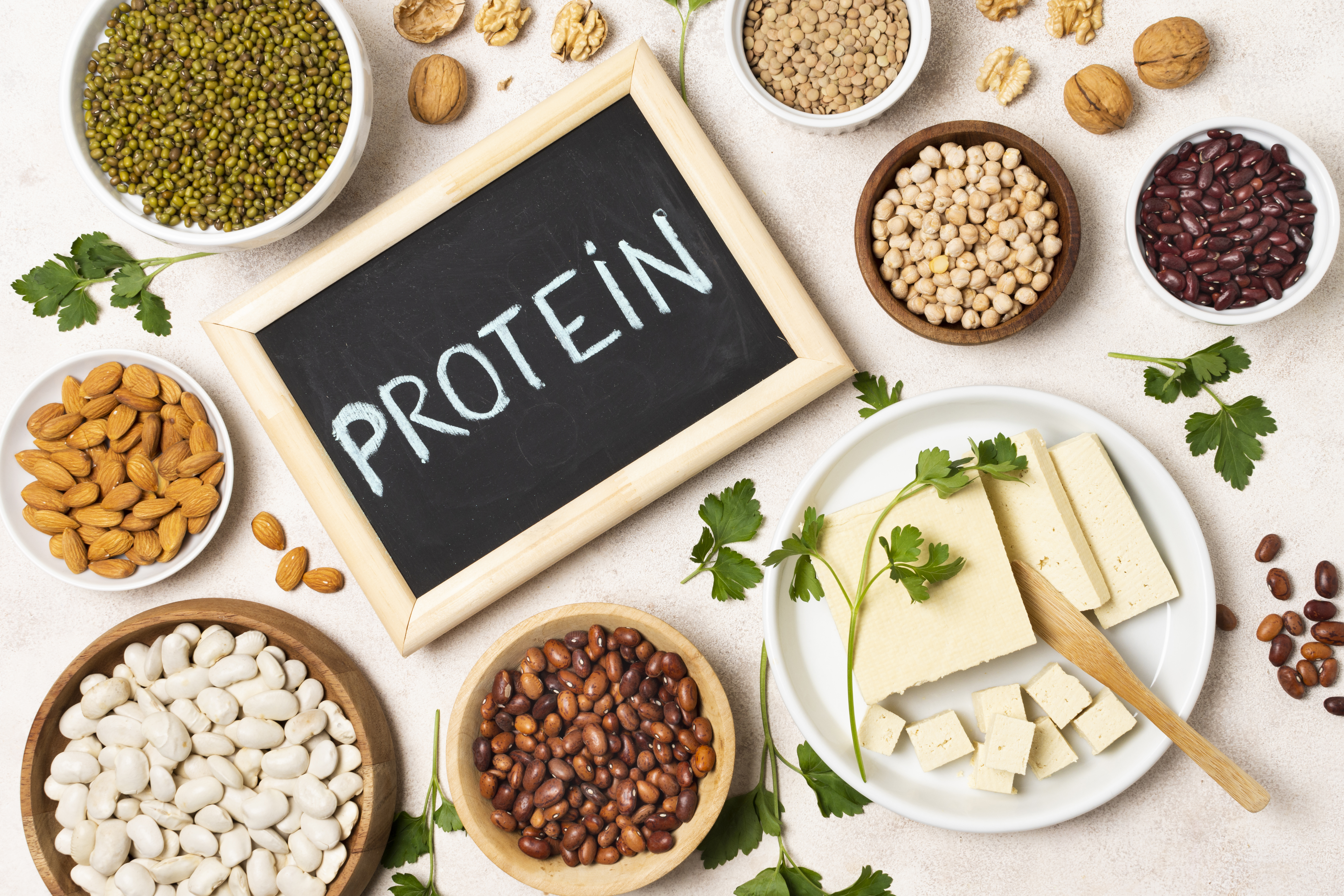Reimagining Protein: Sustainability, Innovation, and Market Dynamics
The protein industry has long been a foundational pillar of global health, nutrition, and food systems. From traditional sources like eggs, dairy, and meat to newer, sustainable alternatives such as soy, pea, and rice proteins, the industry now spans a rich and evolving spectrum. Today, the spotlight is increasingly shifting toward groundbreaking innovations, such as fermentation-derived, microbial, and insect-based proteins, aiming to meet the growing demand for nutrition, sustainability, and functionality.
Consumption of protein is happening in different forms—powders, liquids, concentrates, isolates, etc. Moreover, it is embedded into various categories as diverse as beverages, infant formulas, snacks, and clinical nutrition.
The optimization, development, and innovation of protein products revolve around agricultural practices, supply chains, manufacturing advancements, regulatory bodies, and the ecosystem of research institutions, each with its own complexities. This deep integration fuels an environment of continuous innovation and commercial opportunity.
Emerging Trends Shaping the Protein Landscape
The protein industry is going through a seismic shift, transforming the way protein is consumed. Here are a few trends pushing the evolution:
- Alternative Proteins: The rapid increase in consumer choice and interest has spurred the development of insect, microbial, and plant-based proteins as innovative and sustainable alternatives compared to animal-based proteins.
- Clean Label Ingredients: The preferences of consumers are aligning with eco-friendly formulations and ethical sourcing, driving brands to manufacture precisely by focusing on cleaner ingredients
- Precision Fermentation: The technology is fuelling the production of custom proteins at the molecular level, allowing the enhancements of scalability, quality, and nutritional profile.
- Molecular Farming: Genetic engineering techniques are aiding in producing top-notch and high-quality proteins while reducing costs and being friendly to the environment.
- AI in Protein Development: Artificial intelligence and machine learning are being leveraged to accelerate formulation design, optimize processes, and predict functionality in new protein systems.
Key Market Drivers
The protein industry worldwide is riding on a robust market force, pushing it to grow multifolds:
- Shifting Consumer Preferences: Sustainability is reshaping demand with surging health awareness and the need for wellness
- Higher Disposable Incomes: Emerging markets and protein-rich foods are driving consumption of the premium food space
- Continuous Product Innovation: Brands are putting efforts into research and development to improve consumer experience and functionality
- Sustainable & Ethical Sourcing: Greener protein options are being adopted by consumers following animal welfare and ongoing environmental impact
- Tech-Enabled Scalability: Biotech advancements, precision farming, and automation are enabling scalable protein production with efficiency

Market Snapshot
A wide range of categories is available that help in incorporating proteins in the form of bakery, beverages, sports nutrition, medical food, and dairy. Sustainability-oriented advancements are helping manufacturers reduce costs, scale up production, and expand into new markets.
- Global Market Value (2022): USD 68.6 billion
- Projected CAGR (2023–2030): 5.4% (revenue-based), slated to reach USD 105.6 billion by 2030
For more data and numbers, fill out the form to download.
Innovation Ecosystem: Players Shaping the Future
Major Industry Leaders
The top industry leaders and companies that are making it count in the innovative protein market are:
- ADM, DuPont, Ingredion, Bunge, Arla, Kerry, Rousselot, Scoular, and Cargill.
They continue to dominate by investing in advanced processing, formulation, and clean-label solutions.

Startups to Watch
Innovative disruptors like Rival Foods, Agricoze, JUST, MicroHarvest, BettaFish, LenioBio, Vivici, Climax, Air Protein, and Eternal are developing scalable alternatives to traditional proteins with a focus on fermentation, sustainability, and functionality.
Pain Points in the Protein Industry
Like every other industry, despite quick growth, there are several core challenges that need to be addressed:
1. Low Functional Properties
- Issues: Bad solubility, gelation, foaming, emulsification,
- Root Causes: Aggregation, polyphenol interaction, pH sensitivity
- Impact: Limited application across food formats (e.g., beverages, bakery)
2. Unsustainable Ingredients & Extraction Methods
- Issues: Chemical-heavy processes, high carbon footprint, low yields
- Root Causes: Solvent use, unsustainable crop sourcing (e.g., soy), energy-intensive wet methods
3. Identifying the Right Protein Source
- Issues: Lack of cross-functional usability, incomplete amino acid profiles
- Root Causes: Varying requirements across applications (texture, stability, mouthfeel)
4. Undesirable Off-Flavors
- Issues: Beany, bitter, or metallic aftertastes in plant proteins (pea, fava)
- Root Causes: Volatile compounds (e.g., hexanal), chemical residues, saponins
Innovative Solutions: Moving the Industry Forward
1. Improving Functional Properties
- Companies like FlavaPulse and Ingredion are customising proteins for specific applications such as beverages and bakery products
- Advanced extraction methods—enzyme-assisted, ultrasonic, microwave-assisted, and deep eutectic solvents (DES)—are improving solubility, emulsification, and gelling properties
2. Off-Flavor Elimination
- Steam/wet-heat treatments and dual-stage dehulling are mitigating undesirable notes
- Fermentation and enzyme treatments are being used alongside flavor masking agents to enhance palatability in meat and dairy alternatives
Get a plethora of solutions by clicking here to download.



